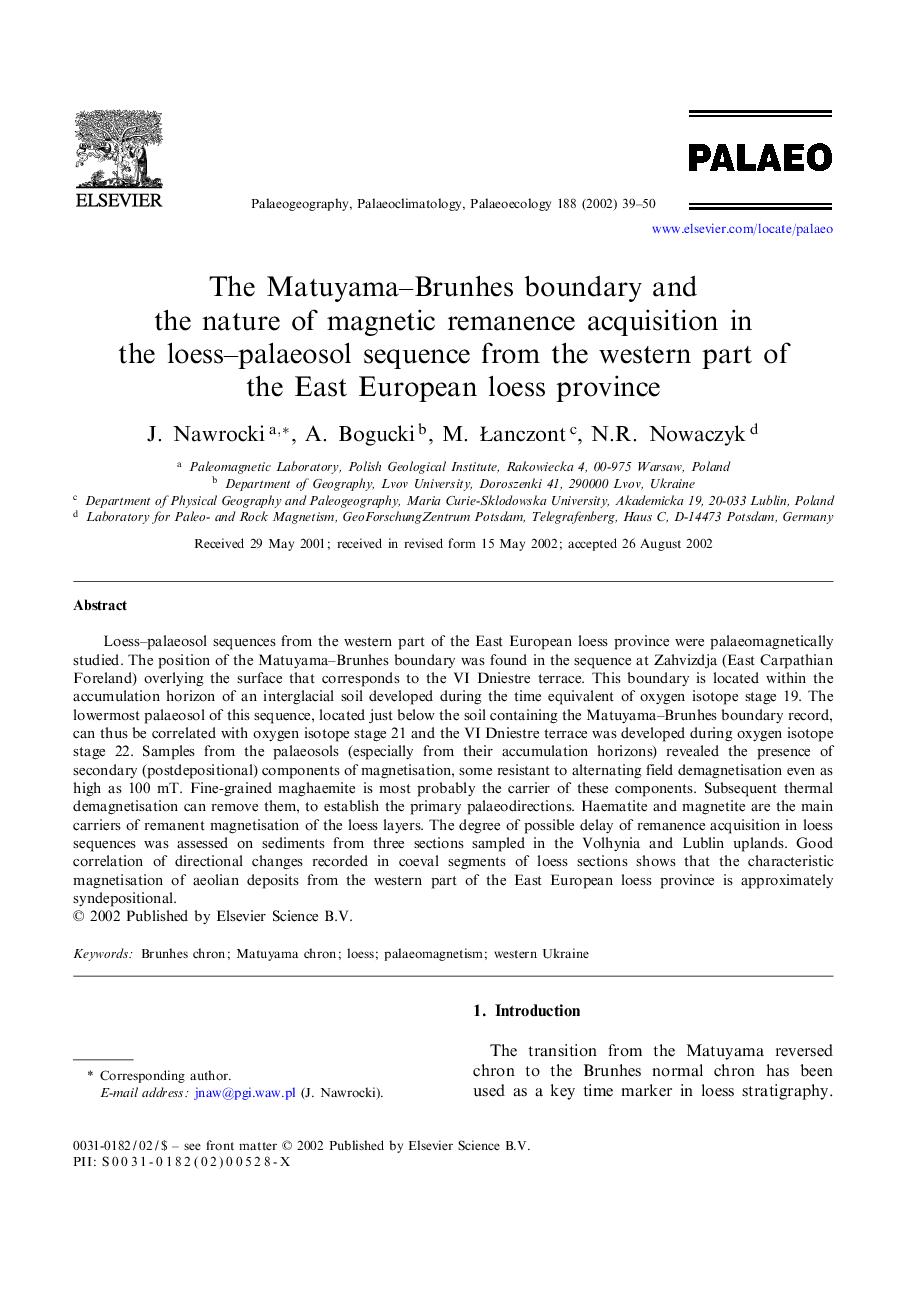| Article ID | Journal | Published Year | Pages | File Type |
|---|---|---|---|---|
| 9463919 | Palaeogeography, Palaeoclimatology, Palaeoecology | 2017 | 12 Pages |
Abstract
Loess-palaeosol sequences from the western part of the East European loess province were palaeomagnetically studied. The position of the Matuyama-Brunhes boundary was found in the sequence at Zahvizdja (East Carpathian Foreland) overlying the surface that corresponds to the VI Dniestre terrace. This boundary is located within the accumulation horizon of an interglacial soil developed during the time equivalent of oxygen isotope stage 19. The lowermost palaeosol of this sequence, located just below the soil containing the Matuyama-Brunhes boundary record, can thus be correlated with oxygen isotope stage 21 and the VI Dniestre terrace was developed during oxygen isotope stage 22. Samples from the palaeosols (especially from their accumulation horizons) revealed the presence of secondary (postdepositional) components of magnetisation, some resistant to alternating field demagnetisation even as high as 100 mT. Fine-grained maghaemite is most probably the carrier of these components. Subsequent thermal demagnetisation can remove them, to establish the primary palaeodirections. Haematite and magnetite are the main carriers of remanent magnetisation of the loess layers. The degree of possible delay of remanence acquisition in loess sequences was assessed on sediments from three sections sampled in the Volhynia and Lublin uplands. Good correlation of directional changes recorded in coeval segments of loess sections shows that the characteristic magnetisation of aeolian deposits from the western part of the East European loess province is approximately syndepositional.
Related Topics
Physical Sciences and Engineering
Earth and Planetary Sciences
Earth-Surface Processes
Authors
J. Nawrocki, A. Bogucki, M. L̵anczont, N.R. Nowaczyk,
